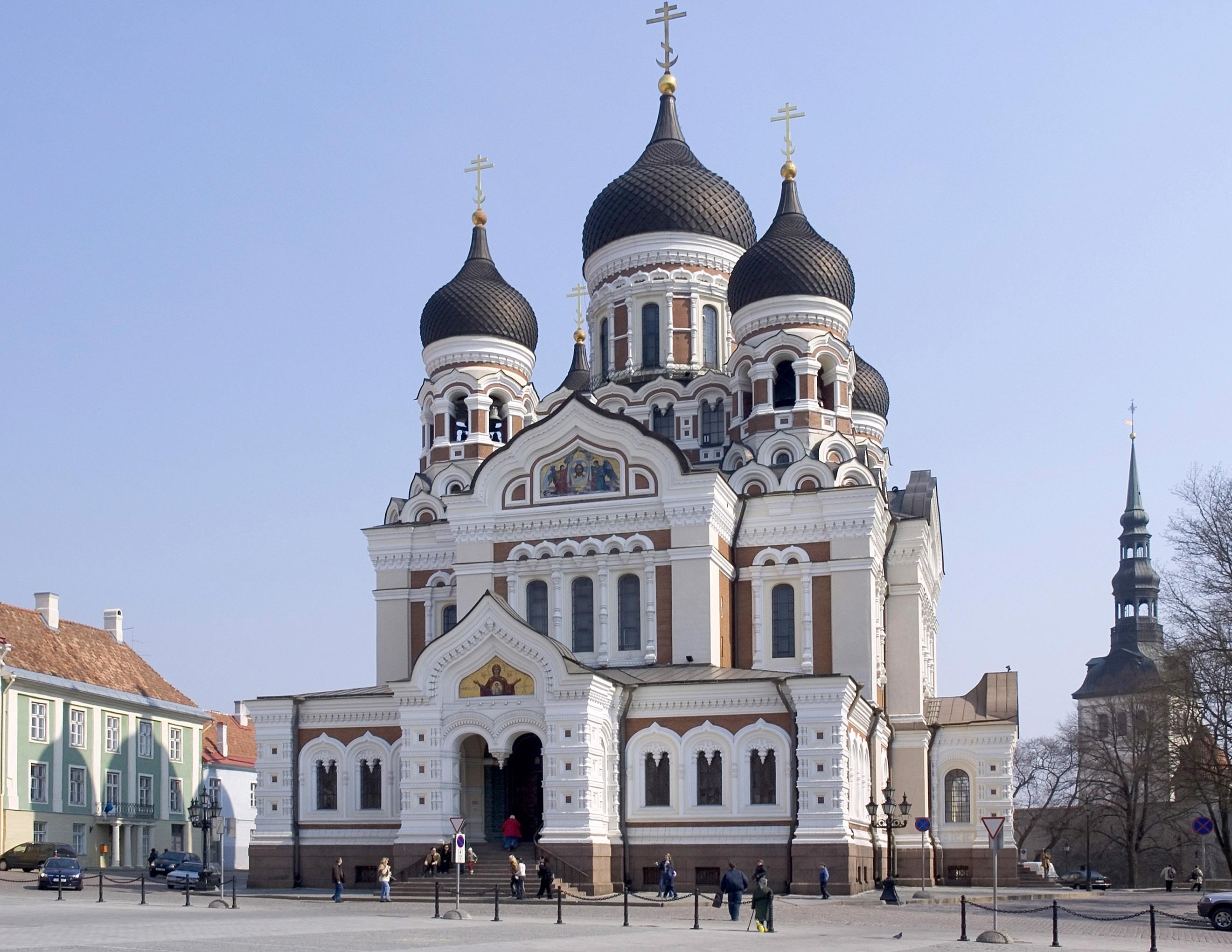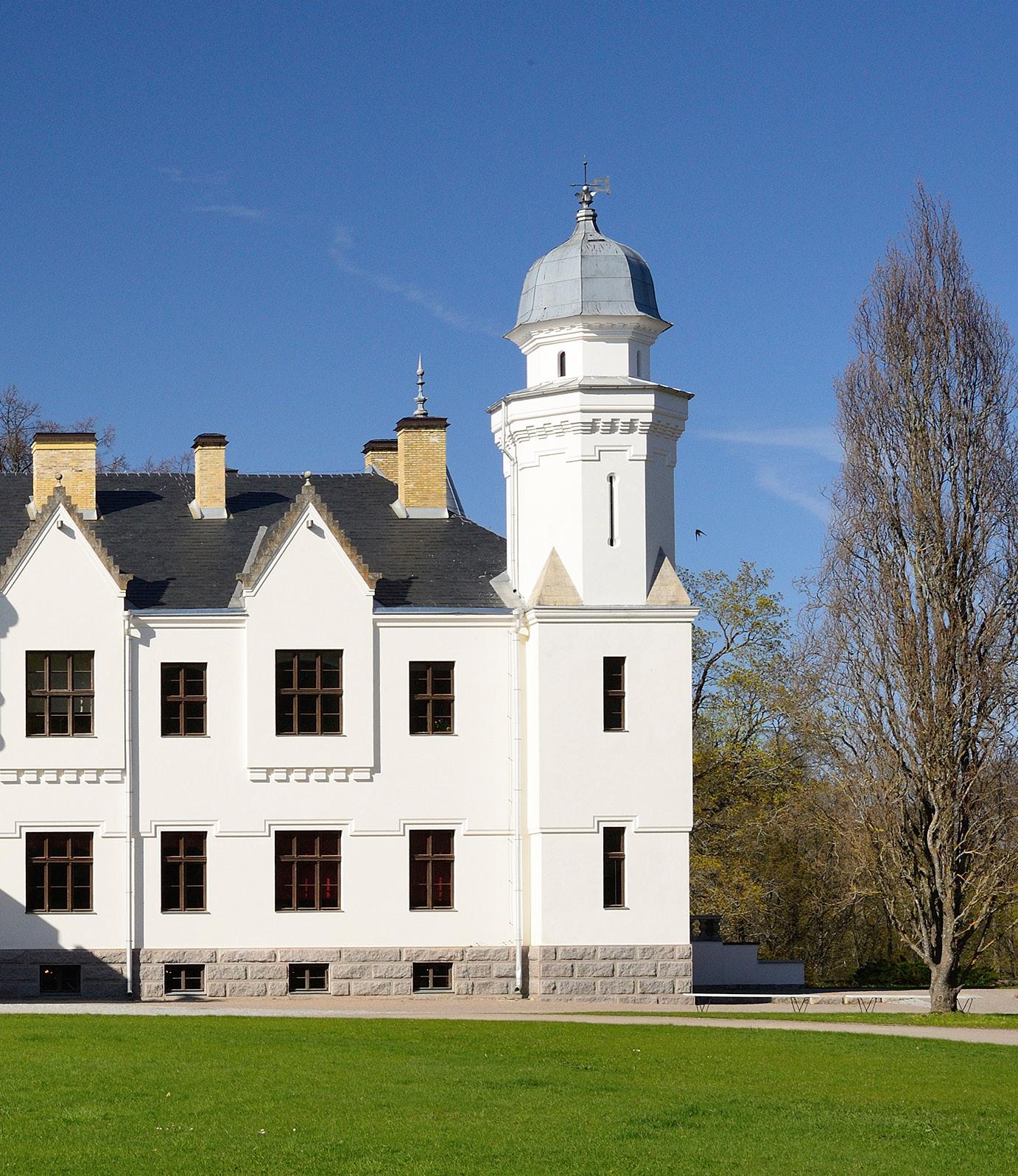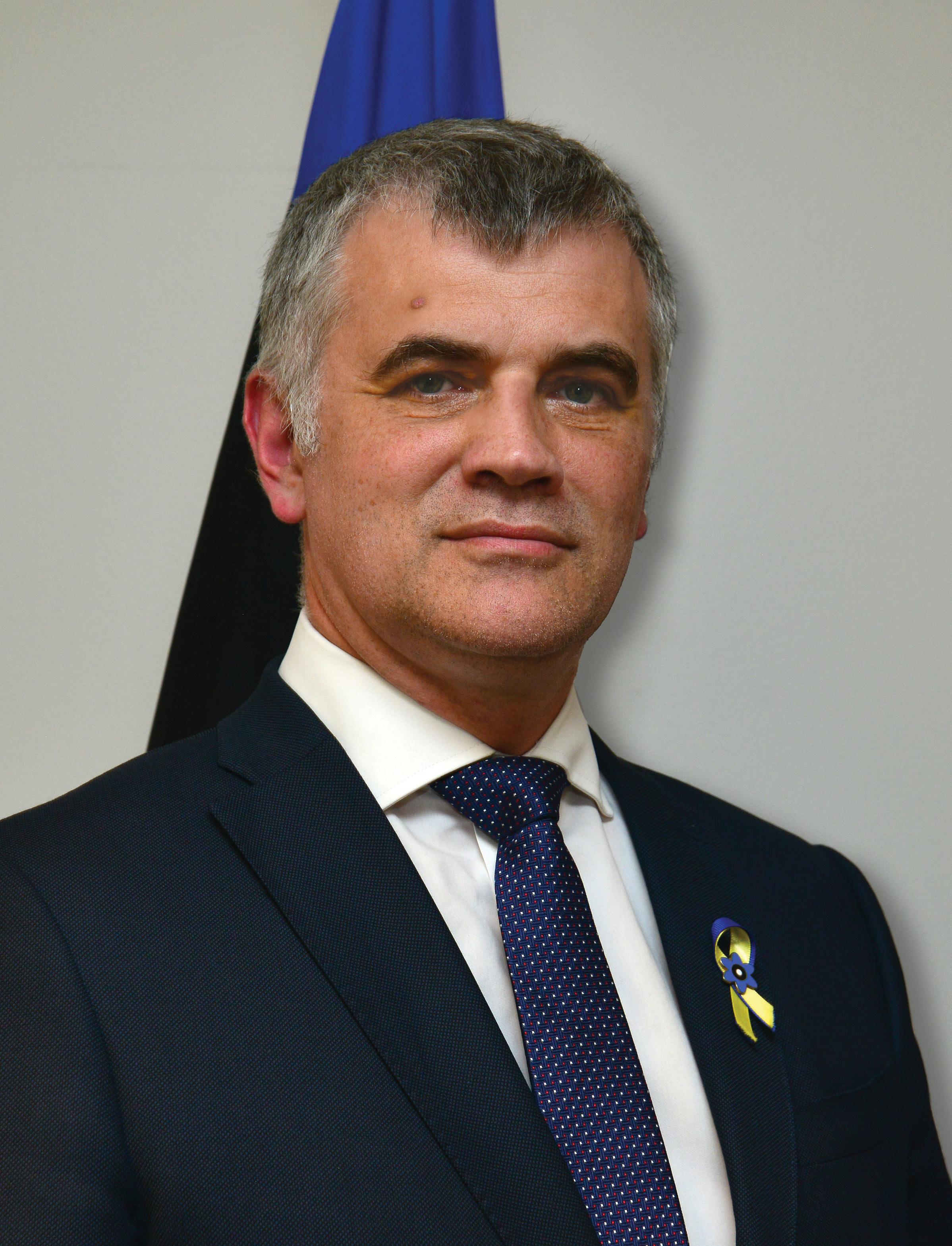
27 minute read
HIS EXCELLENCY KRISTJAN PRIKK, Ambassador of Estonia to the United States
H. E. KRISTJAN PRIKK Ambassador of Estonia to the U.S.
Living at the Intersection of Diplomacy and
National Security

Estonia’s Ambassador Kristjan Prikk
James A. Winship, Ph.D.
Estonian Ambassador Kristjan Priik has led a diplomatic “double
life” moving back and forth between positions with the Estonian Ministry of Foreign Affairs and Estonia’s Ministry of Defense. Prior to being named his country’s Ambassador to the United States in May 2021, he served as Secretary of the Estonian Ministry of Defense, the highest ranking career official in the Ministry with responsibility for management of the Estonian Defense Forces, the Estonian Foreign Intelligence Service, and the Centre for Defense Investments. Unusually, for a professional diplomat and national security expert, his entire career has included only three foreign postings – all of them at the Estonian Embassy in Washington, D.C.
That career stream reflects his country’s unusual diplomatic history through the two world wars of the 20th century, the collapse of the Soviet Union, and into the first quarter of the 21st century. The modern day Estonian War for Independence (1918-1920) was a product of the final days of World War I and was an outgrowth of the core principles that shaped the Paris Peace Conference intended to resolve the outstanding issues of borders and sovereignty that had resulted from that war.

The Treaty of Tartu that ended the Estonian War for Independence described Estonia as “independent in perpetuity,” a concept that originated from American President Woodrow Wilson’s “Fourteen Points Speech” (1918) which referred to the concepts of political and economic independence, territorial integrity, and autonomous development for the territories previously under the control of Europe’s empires. Wilson further elaborated on these points by formulating the concept of “self-determination.” “National aspirations,” Wilson insisted, “must be respected; people may now be dominated and governed only by their own consent. ‘Selfdetermination’ is not a mere phrase; it is an imperative principle of action.”
Estonia, along with the other Baltic Republics – Latvia and Lithuania - emerged from World War I
as an independent sovereign state. That sovereign independence, however, was short lived. In the early days of World War II following the Nazi-Soviet Non-Aggression Pact signed between Hitler’s Germany and Stalin’s Soviet Union (1939) divided the territories between Germany and the Soviet Union into separate spheres of influence. Stalin moved to annex the three Baltic states as Soviet Republics, a status that would define their “occupied” existence until the collapse of the Soviet Union in 1991.
The United States issued a strong condemnation of the Soviet occupation of the Baltic states and refused to recognize Stalin’s annexation, instead referring throughout the Cold War to Estonia, Lithuania and Latvia as “captive states.” As the Soviet Union’s political and diplomatic empire began to erode under the “Glasnost” and “Perestroika” polices of President Mikhail Gorbachev in the 1980’s, Estonia became the first of the Soviet Republics to seek to regain its independence by introducing a resolution on sovereignty in its legislature. Following parliamentary elections in which the proponents of Estonian independence won a substantial victory, a transitional phase designed to lead to independence was initiated with formal independence declared in August 1991.
Estonia, in other words, has lived on both sides of the East-West divide that characterized the second half of the 20th century. It has lived as an independent state, a Soviet Socialist Republic, and once again as an independent state. It has become a member of the NATO alliance and the European Union. It has seen the birth and regeneration of the Russian Federation. It has become a bulwark of national independence, an advocate of using computer technology as a critical part of its political and social system, a proponent of building a strong and resilient European security architecture, and a leading voice of resistance to Putin’s renewed Russian empire aspirations – currently manifested by Russia’s “Special Military Operations” as they seek to annex Ukrainian territory, ransack that country’s infrastructure, and displace its people from their homes and territory.
Even as the conflict in Ukraine stretched from weeks into months and the public debate over United States and NATO support to Ukrainian President Zelenskyy’s forces as they confronted the Russian invaders seeking to take control of Ukraine’s territory and forcibly bring it back under Russian control, Ambassador Prikk was kind enough to find
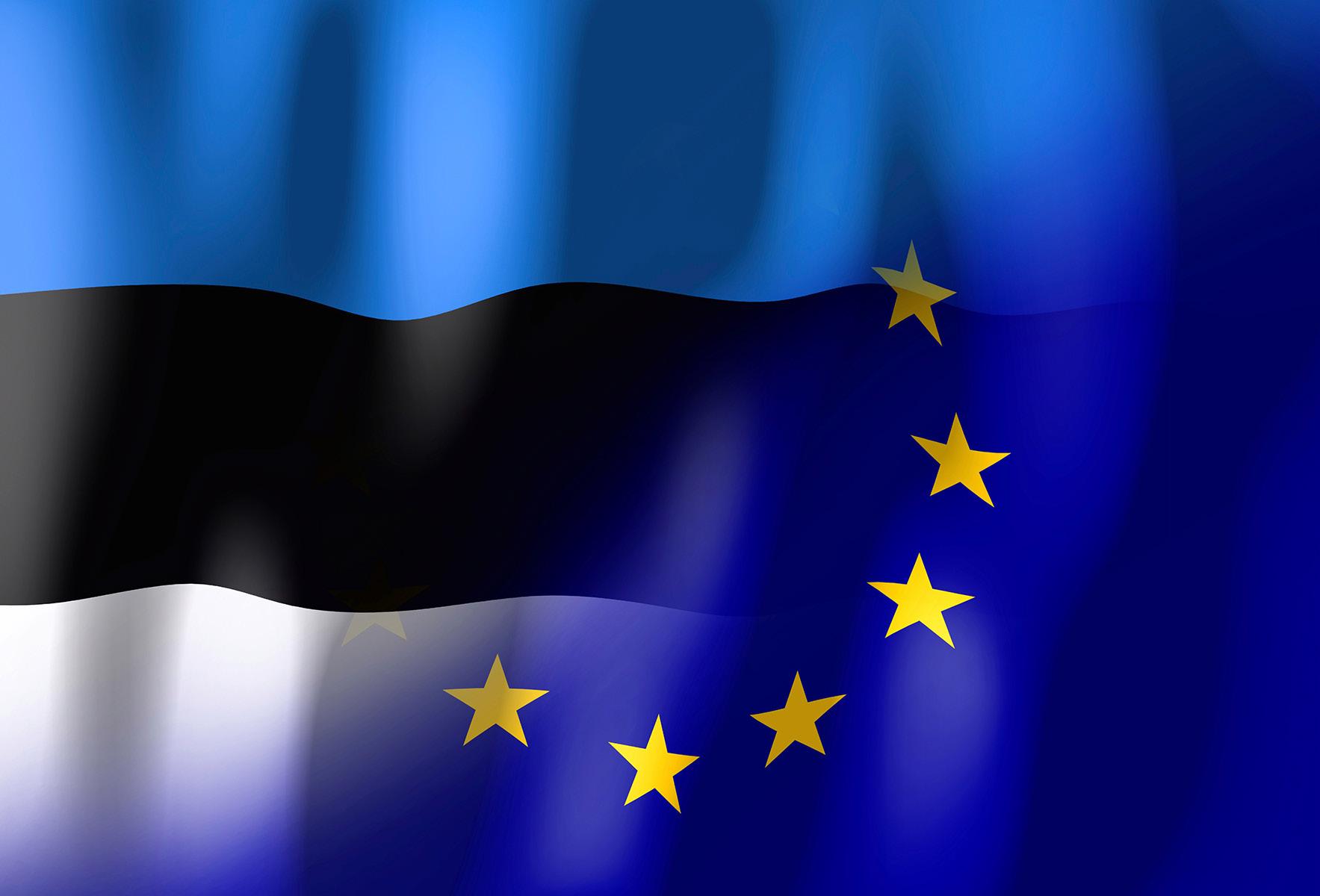
time in his demanding schedule to speak with Diplomatic Connections. His country’s history and his personal story offer fascinating insights into the events unfolding on Europe’s eastern frontier with the Soviet Union, now the Russian Federation under President Putin’s leadership.
Diplomatic Connections: This year 2022 marks the 100th anniversary of diplomatic relations between Estonia and the United States. Given the roughly 50 years of Soviet Russian domination of Estonia from early in World War II until the collapse of the Soviet Union (1940-1991) how is it possible to speak of 100 years of diplomatic relations with the United States and 100 years of continuous Estonian sovereignty? Ambassador Prikk: Not only the quite extraordinary history of our republic but also the history of relations between Estonia and the United States is a great example of how states manage relations even in the most difficult circumstances. It is necessary not only to have patience but also to have clarity on shared basic values in mind. Eventually the democratic and free world is victorious because not only does it value freedom but it translates that concept of freedom into a core set of fundamental human values that inhere in political and individual liberty. Throughout the fifty years of Soviet occupation of Estonia, the United States, together with most of its allies, recognized that the annexation of Estonia as well as the Soviet occupation of our fellow Baltic republics – Latvia and Lithuania –was forcibly established and always illegitimate. That made it possible to resume diplomatic relations almost as if the Soviet interlude had never happened. Additionally, Estonia had its diplomatic representatives working continuously in the United States throughout World War II and the Cold War. Despite the Soviet occupation of Estonia’s territory, there was never a complete break in relations with the United States.
Diplomatic Connections: What events – political and personal – drew you to a career in diplomacy? Ambassador Prikk: In many ways, it was the context of the 1980’s. I grew up under the occupation of the Soviet Union and studied in a Soviet supervised education system. Nevertheless, I never saw my identity as anything other than Estonian. We were able to get information on events in Europe from the truly free world. We were able to understand the differences between the free world and the Soviet system. My grandparents were still around as I grew up. They had grown up in a free Estonia between the two world wars. They remembered and could describe to me how interconnected Estonia was with the rest of Europe and other countries in the world. They could describe to me how the free world and international relations between states functioned beyond the boundaries of the Soviet Union.

Diplomatic Connections: Beyond the recollections of your grandparents how were you able to access the sorts of free information you describe? Ambassador Prikk: We lived on the northern coast of Estonia, which is just 50 miles from the coast of Finland. That meant that for my family the primary source of news was Finnish television, and that was free of the restrictions that were placed on radio and television in the Soviet Union. My parents also listened to Voice of America and Radio Free Europe broadcasts. Given this access to uncensored news my knowledge of the free world was broad, and my curiosity about how Estonia was viewed in the outside world was constantly piqued. I was raised in a very different world from many other Estonian kids. I understood that we might be under Soviet occupation, but there were other governments that realized Estonia was forcibly occupied and a “captive state” of the Soviet empire. When the Soviet Union crumbled it was a natural thing for me to dig deeper and to become more involved in international relations. My goal was to play a part in reestablishing Estonia’s place in the sun among the other nations of the world.
Diplomatic Connections: Was your formal education in Russian or in Estonian? Ambassador Prikk: That is absolutely the right question. Luckily, my education was in Estonian. I studied Russian as a foreign language and also English. But, for me and my friends at that time not being a good student of Russian language seemed to be a way to show our attitude toward the Soviet regime. My Russian is very poor compared to my English despite the fact that I had to start Russian studies when I entered kindergarten. Diplomatic Connections: You earned your Bachelor’s degree in political science and economics in Estonia, but later in your career you earned your Master’s degree from the Strategic Studies program at the United States Army War College. Why did you choose that program? Ambassador Prikk: Shortly after my first posting in Washington I left the Estonian Foreign Service for what was supposed to be a secondment to the Estonian Ministry of Defense in order to learn more about the operations of our country’s security and defense apparatus. Suffice it to say that my secondment turned into a series of appointments at the Ministry of Defense, one of which was as Defense Counsellor at our embassy in Washington. Diplomatic Connections: What was it like being an international diplomatic student at the Army War College of the United States? Ambassador Prikk: Being both an international student and a civilian made me quite the rare animal at the War College. My goal was to bring a different perspective into the classes and help other students to see the world through the lens of a small Baltic state that was once part of the Soviet Union and had now become independent. Such learning should work both ways. It was important for me to attend various lectures and seminars with professional counterparts at the War College, but it was equally important for me to explain the world view of a small European state to those who were accustomed to very broad schemes in the Pacific, or the Americas or the trans-Atlantic arena. In Estonia we certainly cared about all these different concepts, but it was also important to explain the reasons why Estonia would think certain issues
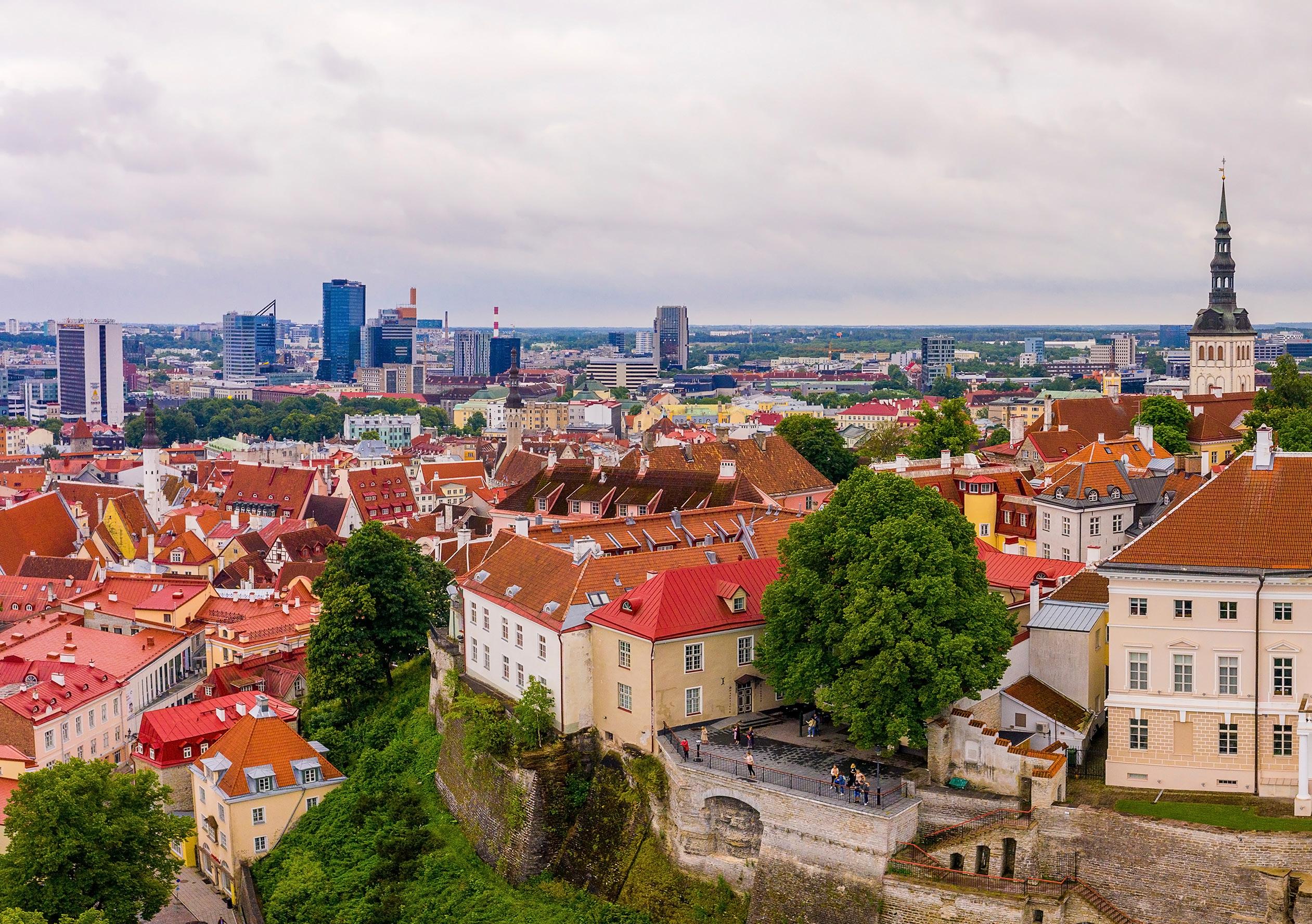
– for example, the issues related to European security, the Baltic region or to Russia and the East – carried especially great strategic importance for America and America’s decision makers.
Diplomatic Connections: How would you describe diplomatic relations between the United States and Estonia as you assumed your duties last year (2021)? What are the key issues between our two countries? Have they changed in the course of your first year? Ambassador Prikk: There is change in terms of priorities and in terms of focus of attention. The Russian aggression against Ukraine and the process that took us to this point where Russia started to build up its forces on the border with Ukraine and then proceeded to confront the Ukraine and other governments with a series of requests that were phrased as ultimatums has inevitably taken center stage. Our focus in the embassy has been very much on defense issues and national security, even more so than would normally be the case. After all, Estonia does not border Ukraine, but Estonia does border Russia. The requests and ultimatums that Russia and President Putin have presented during this crisis touch the heart of European and trans-Atlantic security. Starting with the United Nations Charter and moving into the broader realm of international and regional security arrangements Russia has broken numerous international agreements regulating international and European security. These concerns have been at the core of our work here in the United States and across the world.
Diplomatic Connections: Understandably the situation in Ukraine dominates relations with the United States and NATO at the moment, but are there additional issues beyond those immediate security concerns? Ambassador Prikk: When it comes to the Estonian-U.S. relationship national security and defense issues are the most important set of issues that we have to deal with. However, this is not everything. We are deeply involved in economic affairs between our two countries as well as cultural and educational exchanges. We also share concerns about a wide range of global connectivity issues like climate change, cybersecurity, environmental issues, freedom of the seas and public health . . . especially the

global response to Covid-19 and future pandemics. In a way, being close to the United States and cooperating with the U.S. on global connectivity issues bring us closer in terms of national security and defense related issues because the very definitions of national security and defense priorities have changed dramatically in the first quarter of the 21st century. The relationship between the United States and Estonia is surprisingly complex. Diplomatic Connections: Estonia is often described as a leading model for “digital government” or as a model for a so-called
“e-state” in a world that is rapidly adapting to technological change. What do those descriptions mean with regard to the operation of the Estonian government and your country’s economy? Ambassador Prikk: Estonia has been an early and eager adopter of advanced electronic technology and computerization and their applications. In practicality, these terms mean that Estonian society is not only used to but expects the public services offered by the central government or local governments or services offered by private companies to be provided by the use of electronic means. In that way there is an ecosystem of different services that relies on using the same basic principles for data collection and data protection and for using the same basic tools for identifying people. They expect the same advanced electronic systems to be used for delivering a wide range of services. More than 99% of public services in Estonia are available for use by computer using the same basic principles of data technology, transfer and security. Estonians have a saying: “The only two public services that people are not able to use on-line are getting married and getting divorced.” There is nothing technical behind these two life events not being on line, but it is very much related to how people think and react in these highly personal situations. Presumably it is better for people to have a bit more time to reflect on these momentous decisions; they should not be just one click away. Diplomatic Connections: Estonia has developed the concept of “e-residence.” What is an e-resident of Estonia and what rights and privileges are extended to e-residents of your country? How does e-residence by a “foreigner” work in terms of business operations and economic development? Ambassador Prikk: It is basically a concept whereby Estonia as a government, as a country and as a people was approached years ago by various persons inquiring whether the public services and the environment that we have created for establishing businesses were available to non-citizens. People wanted to know not only whether they could establish a business in Estonia but how to do it. How could they take advantage of these services? In response Estonia developed what is called “e-residency.” It is a program whereby non-citizens and non-residents of Estonia who go through certain screening and vetting processes can obtain a government-issued digital identity. They are thereby issued different identity documents which give them legal rights to digital tools that allow them to access Estonian government services and a variety of government provided business services. This makes it possible to manage a business registered in Estonia from anywhere in the world. By offering our digital ecosystem to non-citizens, non-residents who are willing and able to register their businesses as based in Estonia we are able to expand the number of companies legally based in Estonia beyond what we might be expected to have. In the process we strengthen our economy. Diplomatic Connections: Does e-residence then give a business registered in Estonia access to the full European Union? Ambassador Prikk: Basically, yes. The companies that are registered in Estonia as e-residents have all the same rights within the EU that a company physically resident in Estonia

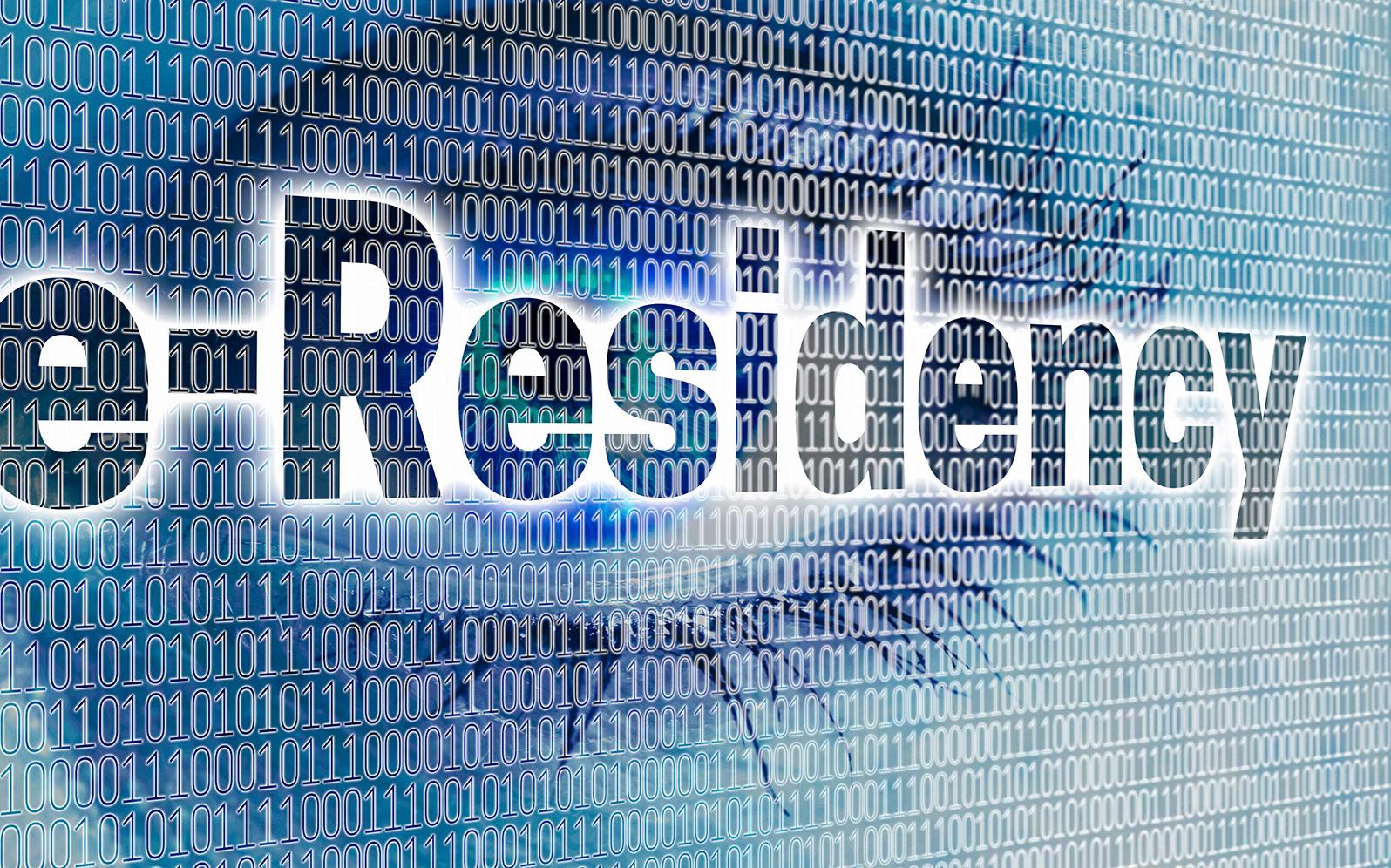
would have in the European Union and the European Single Market.
Diplomatic Connections: Essentially, from the point of view of the European market, once a company and its owners are e-residents of Estonia they are operating within the EU as if they were Estonians. Ambassador Prikk: Yes, that it true. Such companies are operating under the jurisdiction of European law and the rules of the European Union. Diplomatic Connections: President Putin’s invasion of Ukraine has focused the world’s attention not only on Russia but on the question of the security of the NATO alliance countries and of Europe as a whole. What has been the impact of the conflict in Ukraine on the “enlarged” NATO alliance that emerged in the aftermath of the Soviet Union’s implosion? More specifically, what has been the impact on the Baltic states and their neighbors? Ambassador Prikk: On the one hand, it is absolutely fair to say that if there is anything at all positive spinning out of the Ukraine crisis it is the renewed understanding in the West, a renewed understanding among the NATO countries and within the EU that there are more things that tie us and bind us together than those that separate us. There is certainly a new found and stronger unity within NATO than there was prior to this particular crisis. On the other hand, this Russian aggression reminded us of the existing threats, not only military threats but also the fact that politically we should not take anything for granted. We should not be absolutely sure that the agreements and the treaties that have guided the European and transatlantic security for the past fifty years cannot be violated. Diplomatic Connections: How do these realizations impact on Estonia’s foreign policy and, in turn, on NATO policies? Ambassador Prikk: We must work along three main lines of effort. First, we must support Ukraine in any way we can to make sure that this aggression does not pay off. Second, we must work to raise the cost of this aggression to Russia by means of a wide variety of economic sanctions that are carefully targeted to drive home the message that Russia’s aggression will only further isolate it from Western Europe. Third, and this is particularly important to the Baltic countries as well as other countries on the eastern flank of NATO, NATO defense planning must be adjusted to take into account the unfortunate events in terms of death and destruction as well as the violations of international law that have been committed by Russian forces in Ukraine. There must be accountability. Diplomatic Connections: What is Estonia’s view of the fact that both Finland and Sweden are applying for membership in the NATO alliance and are moving to do so on what appears to be a very fast track? Would such a move enhance Estonia’s security? Ambassador Prikk: The very short answer to that would be “YES.” Since its move toward the EU and NATO the Baltic
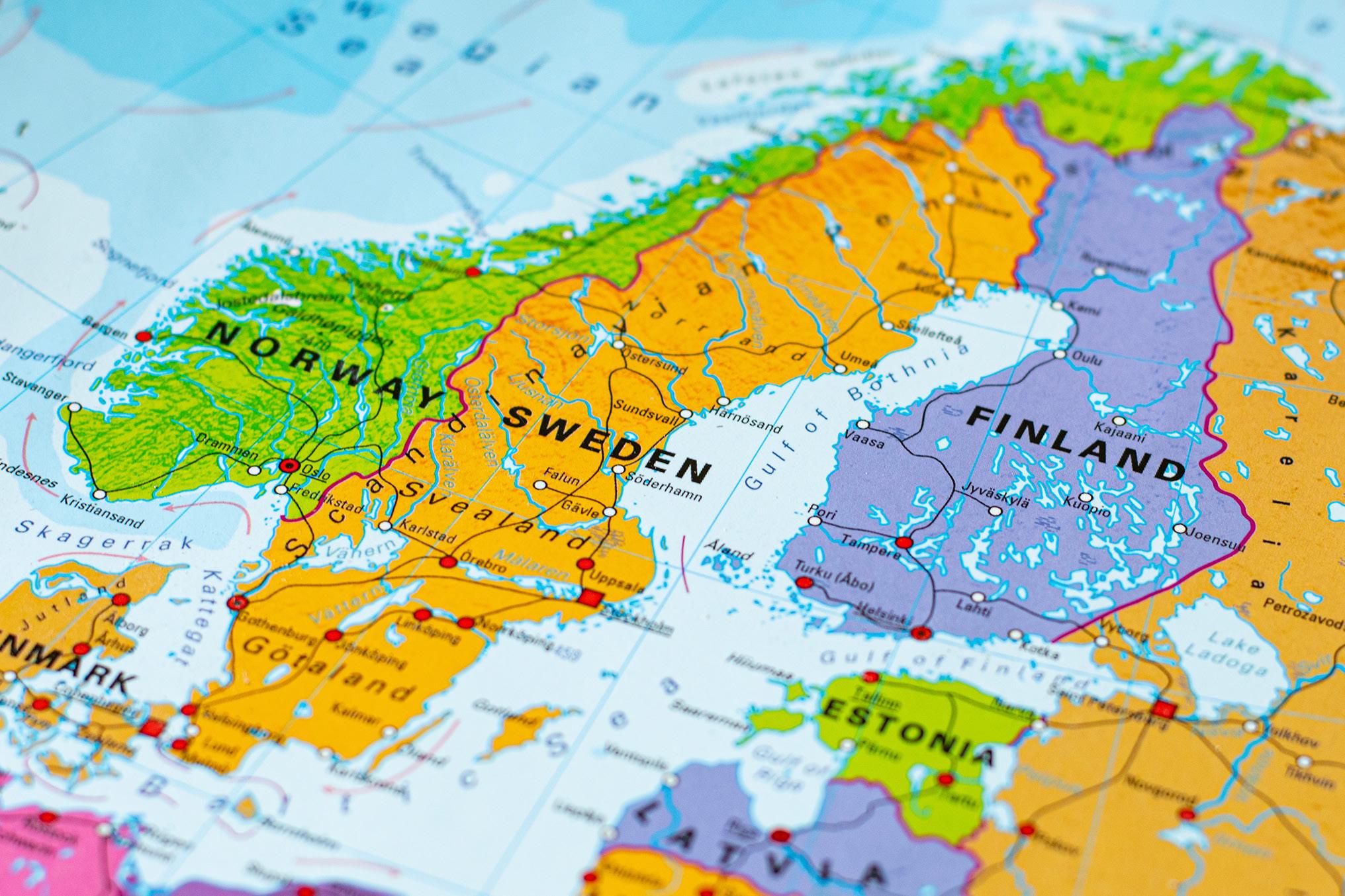
region is the group that has been stable and growing economically, and security-wise it has been stable in the best way. If Finland and Sweden were to decide to join NATO, it would only build on the Baltic region’s growth and stability. Diplomatic Connections: Russian energy – oil and especially natural gas – is critical to the Russian economy and to the functioning of much of the European economy as a whole. In essence, Russia’s energy sector has been fueling the military attack in Ukraine with energy payments from Europe’s leading economies as well as other economies around the world. These same energy payments soften the impact of economic sanctions on Russia’s economy. This economic interdependency led to the building of the Nordstream I and II pipelines through the Baltic Sea to bring Russian gas to the West. Can the European market, the development of renewable energy sources, the impact of Covid-19 – that can disrupt energy markets and skew prices. The use of Russian gas and oil in Europe has been a political as well as an economic decision. Energy availability, even if it is Russian gas being distributed in Europe, has made certain decisions possible as opposed to imposing constraints that limited energy supplies would necessitate. The distribution of Russian gas and oil requires certain political choices. Bluntly, for most countries of the world and given currently available technology, “energy independence” is impossibility. The reality of the world in which we live is energy interdependence. Hopefully, as the world moves toward more sustainable energy sources that
The Nord Stream 2 pipeline is designed to bring Russian natural gas to Europe, which receives- despite national security concerns- 40% of its natural gas from Russia. Fears that this dependency on Russian natural gas could become weaponized were realized as the United States and NATO imposed pipeline-related sanctions on Russia as a result of its attack on Ukraine. Putin in turn has responded by curtailing the amount of gas flowing to Europe.

economies wean themselves from Russian gas? How would they do it - in the short run and in the long run? Ambassador Prikk: Energy supply and demand as well as cost and price can be determined pretty closely, but just because the mathematics is rational does not mean that the political and economic choices that shape energy policy are rational. Instead, the energy policy process is impacted by all sorts of exogenous concerns – climate change, sources of conflict and cooperation between states, the job are not hydrocarbon derived energy’s efficacy as a tool of political and economic policy will wane. But, we are not there yet. Diplomatic Connections: How do these realities of the energy market and Russian supply lines impact Estonia’s policy decisions? Ambassador Prikk: Estonia has understood very clearly that it is simultaneously effective and risky to rely on Russian
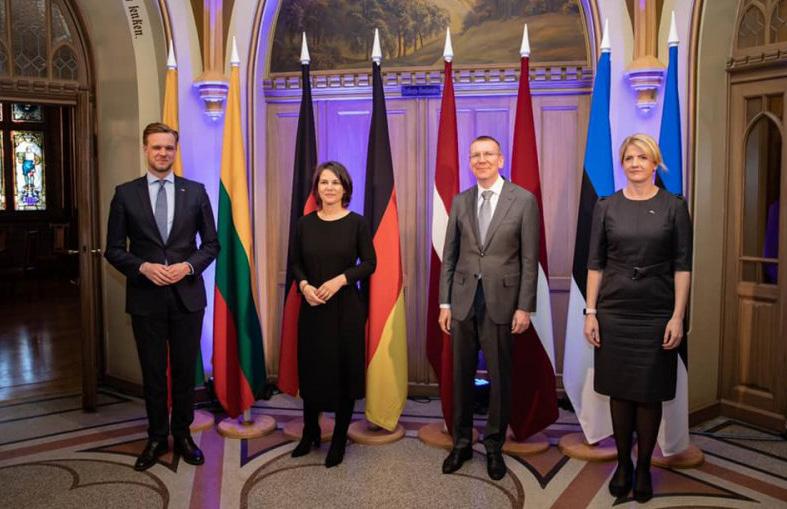
Estonian Foreign Minister Eva-Maria Liimets (R) met with her Baltic and German counterparts in Riga, Latvia [L-R: Gabrielius Landsbergis (Lithuania); Annalena Baerbock (Germany); and, Edgars Rinkēvi s (Latvia)] to discuss critical issues related to the changed security situation in Europe resulting from the Russian invasion of Ukraine. The Foreign Ministers agreed that, “NATO has a key role in defending the rules-based order in our region, and it is clear that the new reality requires us to make strategic decisions. It is crucial to make quick progress toward reinforcing the defense and deterrence posture of NATO’s Eastern Flank and advancing the strategic partnership between the EU and NATO.” Estonia also proposed imposing restrictions on Russian oil and gas to influence how the war is financed. “As we move towards this goal, we should freeze some of the money paid for energy in an escrow account that could be used for rebuilding efforts in Ukraine in the future,” Liimets said.
The route of the Nord Stream 2 pipeline runs through the Gulf of Finland and into the Baltic Sea towards its terminal in Germany. This means that the pipeline runs through the Exclusive Economic Zones (EEZs) of Finland, Estonia, Sweden and Denmark which include critical fishing grounds and areas of undersea economic development that could suffer severe environmental damage from any pipeline mishap.
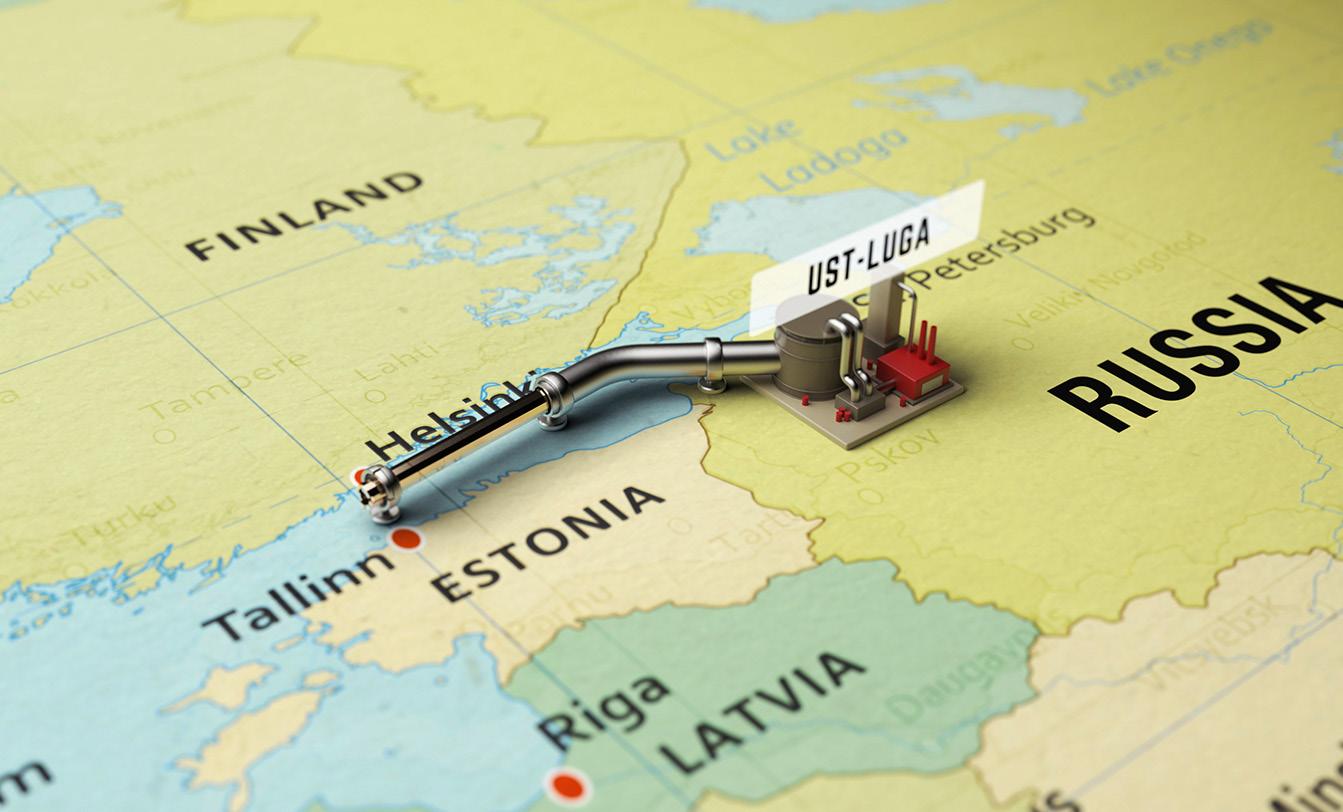
markets or Russian imports in terms of energy or raw materials. Nevertheless, we should not and we cannot develop critical dependencies there. It is a reality that interdependence may – in ways expected or unexpected – limit our sovereignty. At times we may be willing to bear higher economic costs in order to retain the independence and sovereignty that is certainly much more valuable than the economic costs that may impinge on our economic development in the form of price and supply instability. Our government recently decided to eliminate our imports of Russian natural gas as soon as possible. We expect to discontinue using Russian natural gas as of this coming fall. We have also agreed to assist Finland in meeting its energy needs in the face of Russia’s decision to cut its energy flows to that country. In any future world we must work against the idea that energy flows and food supplies can be weaponized, and Estonia will do everything it can to facilitate energy flows in the face of Russian cutoffs.
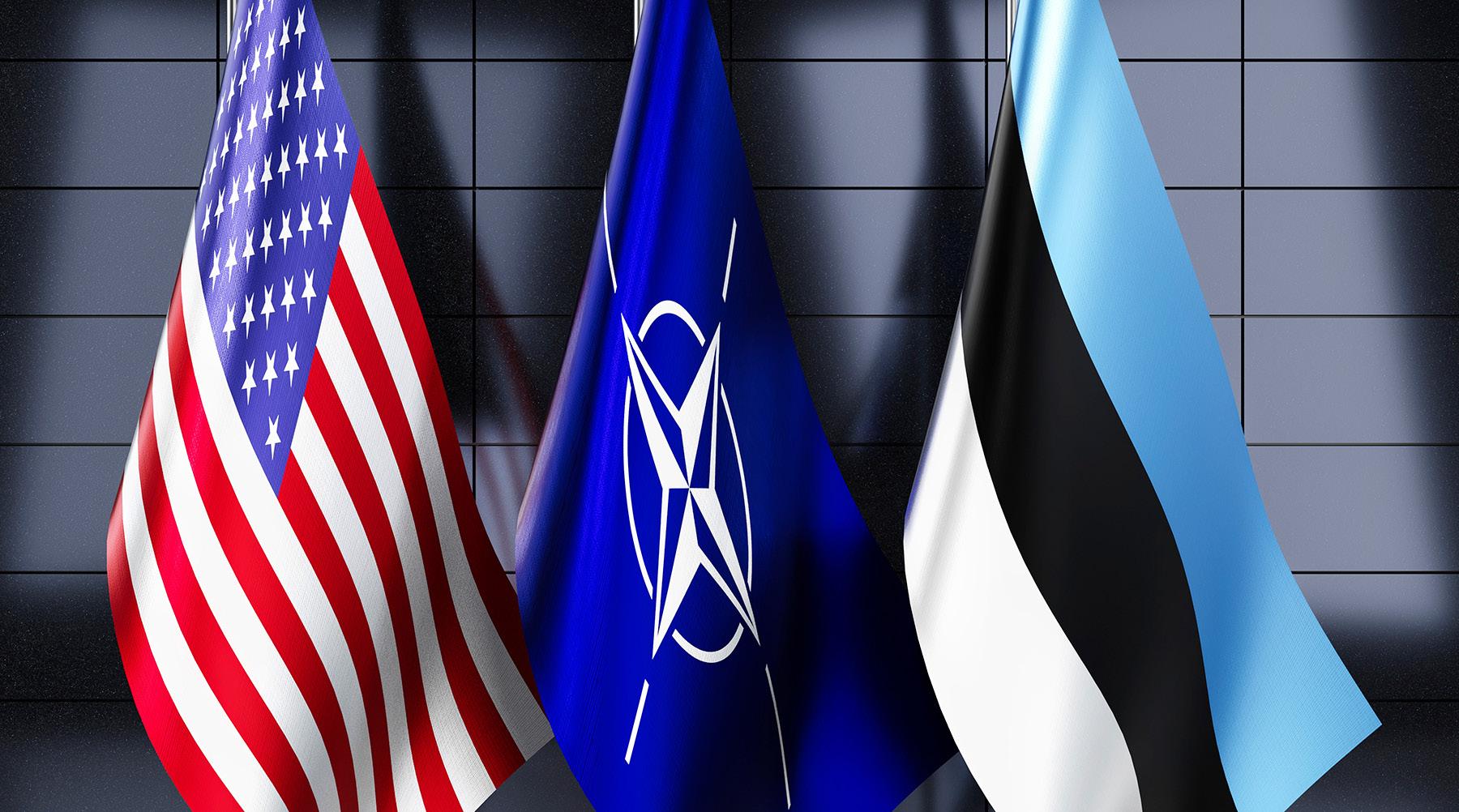
At the moment our government experts are working to find the modalities that can make this possible. With the brain power, with the economic muscle that we have together in Europe, these things are possible to do. That does not mean that there will not be economic pain incurred in order to accomplish this goal and reduce Russia’s economic leverage on our country. Diplomatic Connections: Ambassador Prikk, thank you very much for your informative and insightful answers. Diplomacy has sometimes been described as a balancing act designed to put out fires that threaten regional and global stability. You have clearly demonstrated that diplomacy is a profession of reflection before illconsidered action. Thank you for your time, for your twin commitments to security and diplomacy, and for your reflections. ■
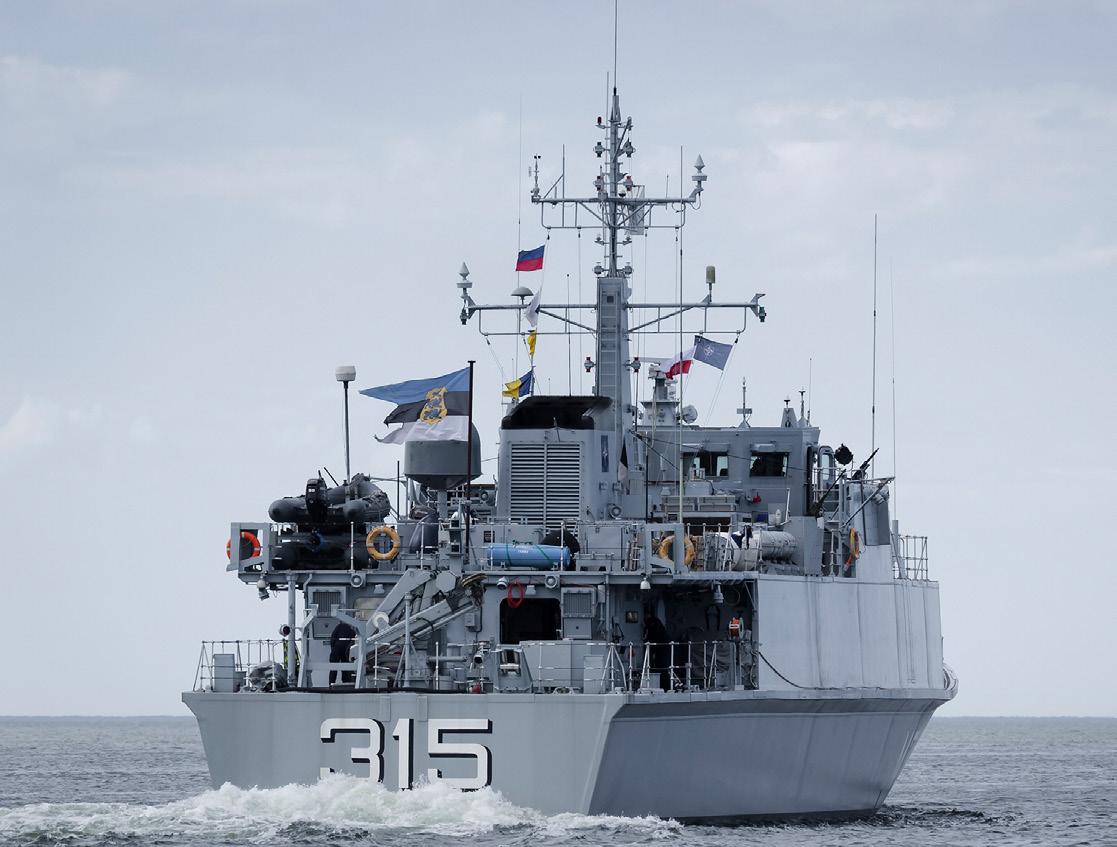
Estonian HUMVEES equipped with AVENGER Short Range Air Defense Missile System on display in National Day parade. Estonian minesweeper responsible for keeping coastal ports and Baltic sea lanes open.
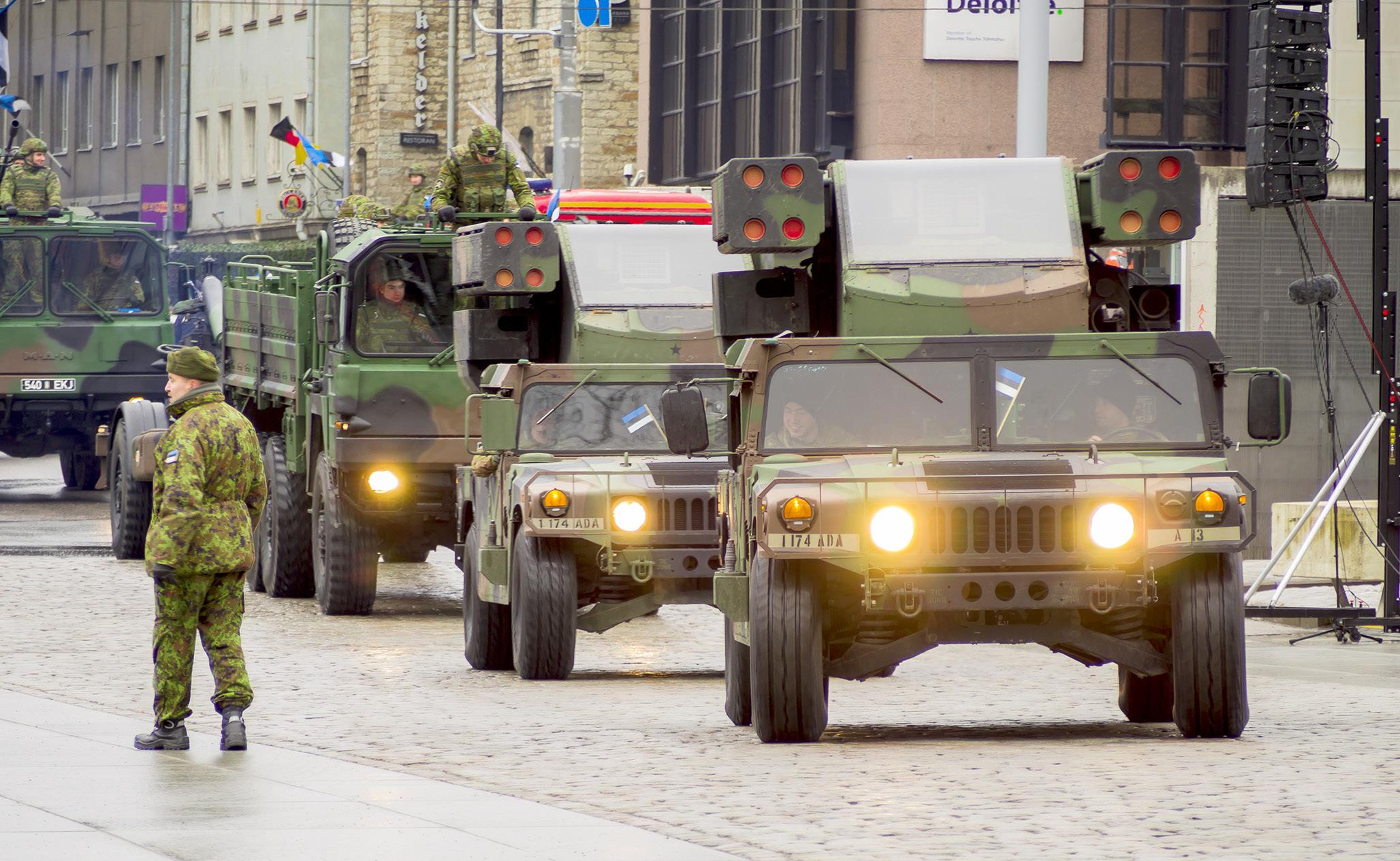
Where geographic anomaly meets regional security
Kaliningrad, a key port city, transportation hub and industrial center located on the Baltic Sea between Poland and Lithuania and the administrative center of a Russian oblast (administrative region) is a prime example of what is diplomatically known as an exclave. In essence, an exclave is a piece of territory physically detached from the mother country which can be reached only by passing through the territory of two or more sovereign states that are not the mother country. Kaliningrad can only be reached from Russia by passing through the territory of Belarus and either Poland or Lithuania. Technically, geographers might point out, Kaliningrad can be reached from St. Petersburg via sea passage through the Gulf of Finland and the Baltic Sea making it a semi-exclave.
Where geographic anomaly meets regional security
Kaliningrad, a key port city, transportation hub and industrial center located on the Baltic Sea between Poland and Lithuania and the administrative center of a Russian oblast (administrative region) is a prime example of what is diplomatically known as an exclave. In essence, an exclave is a piece of territory physically detached from the mother country which can be reached only by passing through the territory of two or more sovereign states that are not the mother country. Kaliningrad can only be reached from Russia by passing through the territory of Belarus and either Poland or Lithuania. Technically, geographers might point out, Kaliningrad can be reached from St. Petersburg via sea passage through the Gulf of Finland and the Baltic Sea making it a semi-exclave. Modern control of Kaliningrad by the Soviet Union and the Russian Federation is a geographic anomaly resulting from the events of World War II. Known for centuries as Königsburg under Prussian and German rule, the city was liberated and occupied by Russian forces in 1944-45. Among the many territorial claims that Stalin presented in the face of Germany’s defeat was that the Soviet Union would take control of Königsburg. Stalin’s “fact on the ground,” control of this exclave on the Baltic, was acknowledged by President Truman and British Prime Minister Clement Atlee in the Potsdam Agreement of 1945.
Kaliningrad’s strategic position provides Russia with a Baltic seaport that is ice-free year round, and the city’s port – Batiks – serves as home port for Russia’s Baltic fleet giving it easy access to the Scandinavian states, passage to the North Sea and hence to the open water of the North Atlantic. In the current context, where Kaliningrad is the outpost of Russian presence in the southern Baltic rim, the Russian Federation views the port city as a vital outpost and a major industrial center directly or indirectly serving the military. Russia’s Baltic Sea fleet frequently carries out naval training exercises rehearsing protection and control of the sea lanes and potentially threatening key communications links (underwater cables) adjoining the Scandinavian states and providing access to the North Atlantic for both surface vessel and submarines.
A vital crossroads and a vital strategic link
The so-called Suwalki Gap (also known as the Suwalki Corridor), named after the Polish city of Suwalki, is a narrow land bridge that provides the critical overland link between Lithuania and Poland. Equally important, that same narrow strip of land lies between the Russian exclave in Kaliningrad to the west and Belarus, a close Russian ally, to the east. Looking at the map of Northern Europe it immediately becomes clear that this “gap” is the only overland supply link between the Baltic countries and their NATO Allies to the south. That critical link is quite narrow, only 60 miles (100 km) wide. That corridor is hemmed in from all directions – Kaliningrad to the northwest and Belarus to the southeast, Lithuania to the north and Poland to the south – making it a vital transportation link for both the NATO alliance, if the Baltic states are not to lose a vital supply line, and for the Russian Federation if Kaliningrad is not to be stranded amid an enlarged NATO community.

Estonia and NATO have seen the Russian military exercising operations designed to seize quickly this strip of land between Poland and Lithuania with the goal of cutting – Estonia, Latvia and Lithuania – away from the rest of NATO. As it stands right now the Baltic countries are perched along the shore of the north Baltic Sea like a peninsula. If the Suwalki Gap link were cut, that action would leave the Baltics like a very vulnerable island of NATO. ■
Estonia


Old town of Tallinn with narrow streets, medieval buildings and small restaurants and cafes.
Old cobbled streets of Tallin, Estonia at night.

Old Tallinn


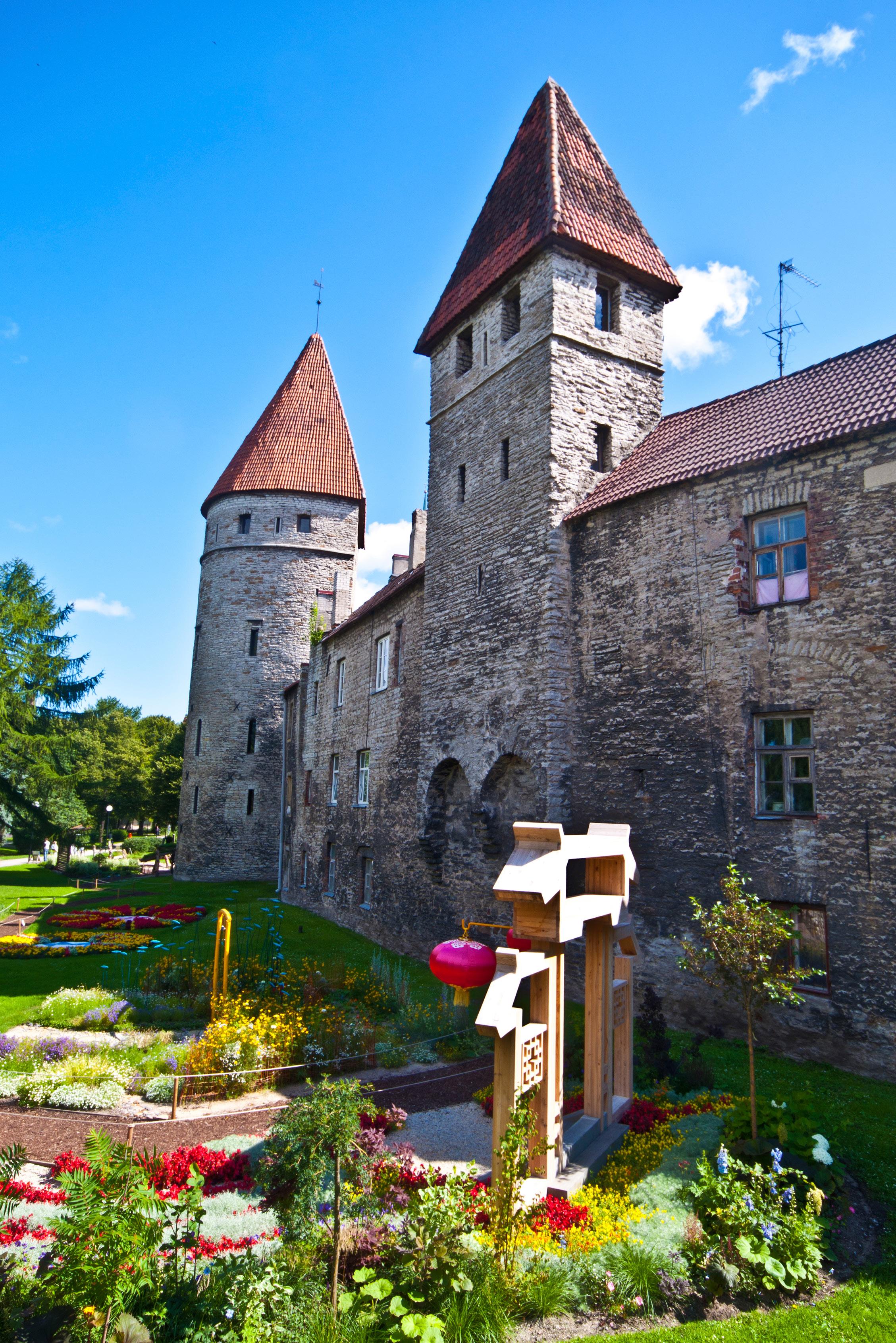

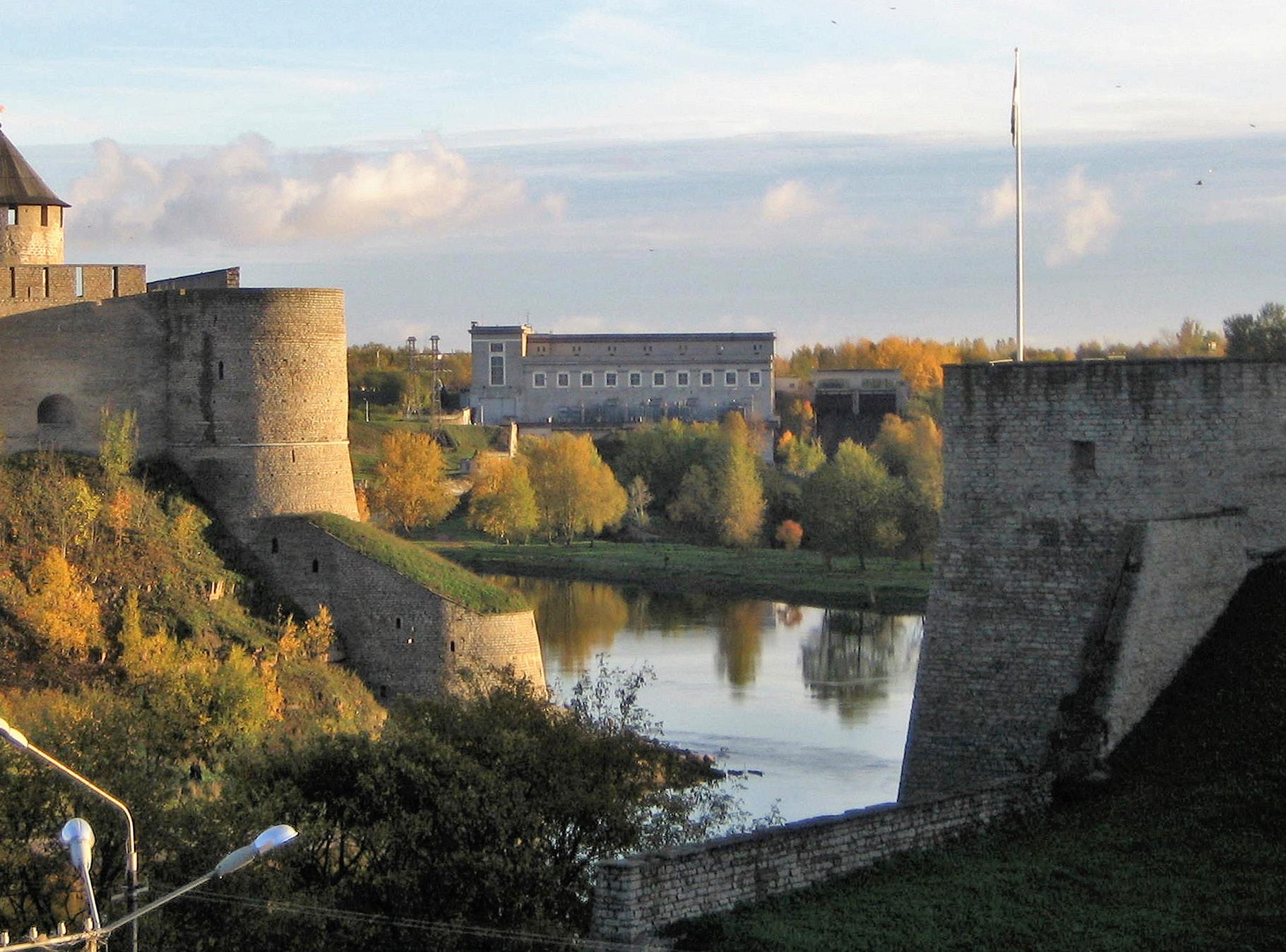
Historical Hermann Castle in Narva, eastern Estonia.

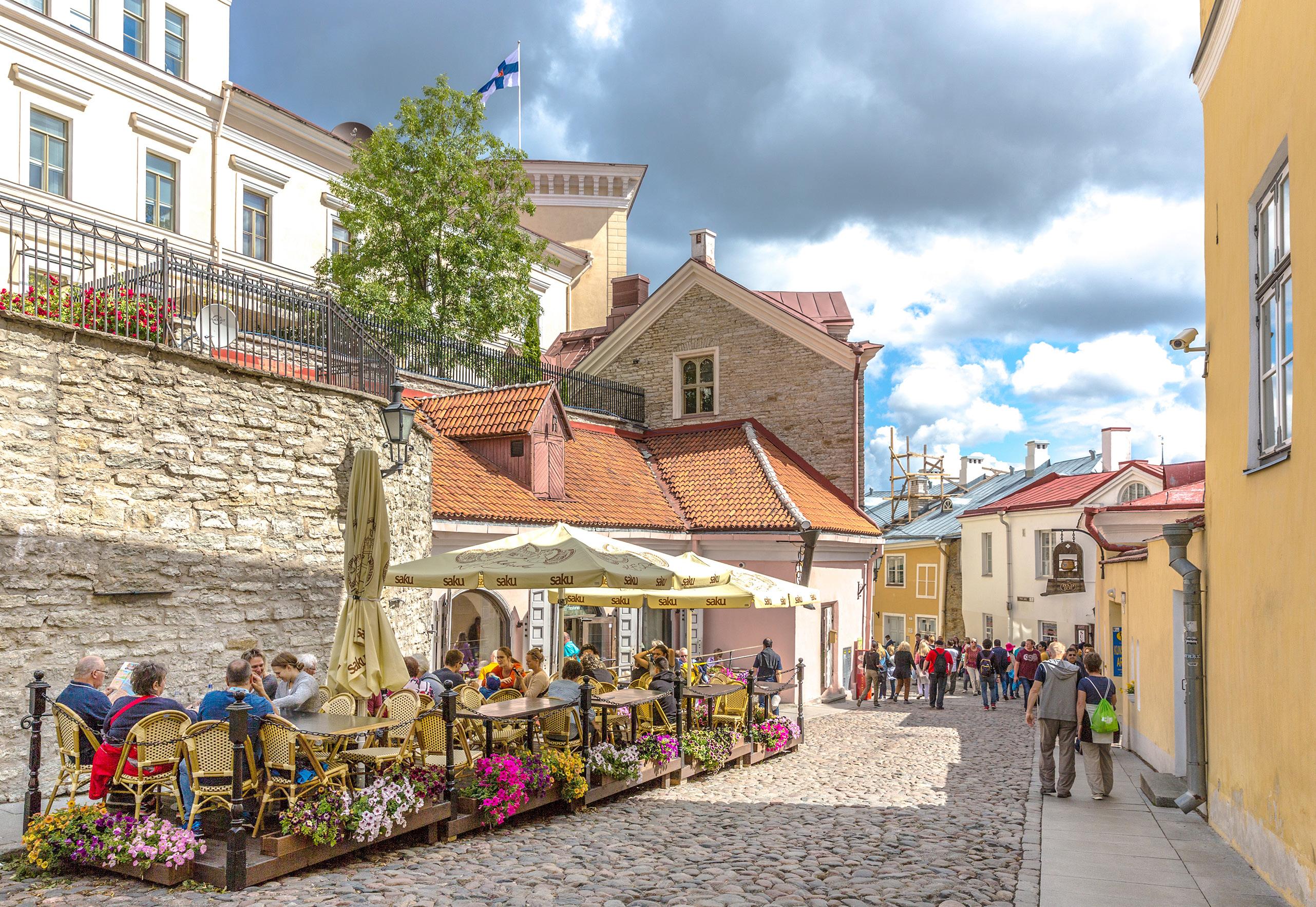
Tourists and locals dining in a quaint restaurant in the streets of the old city of Tallinn, Estonia.

Port of Tallinn
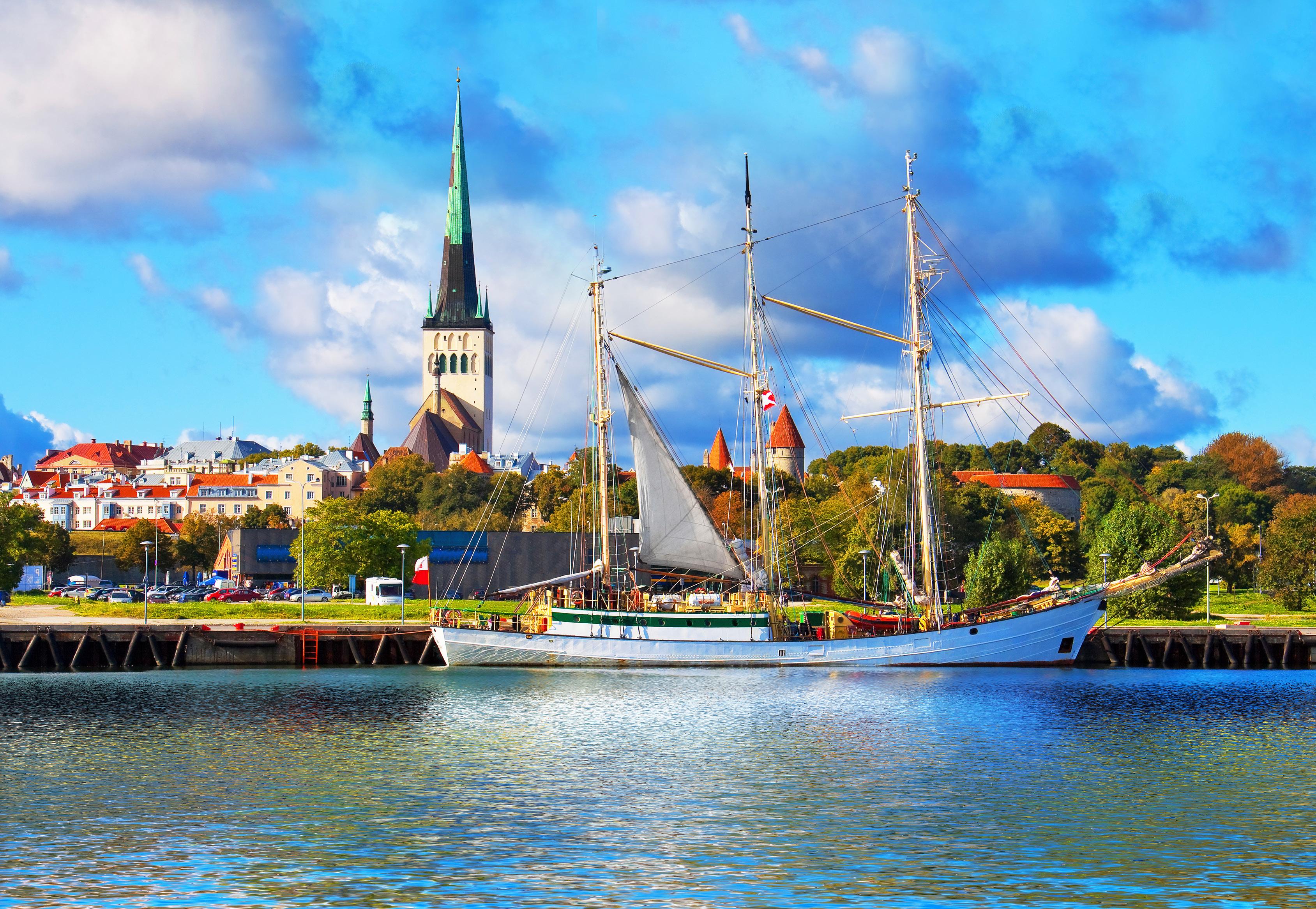
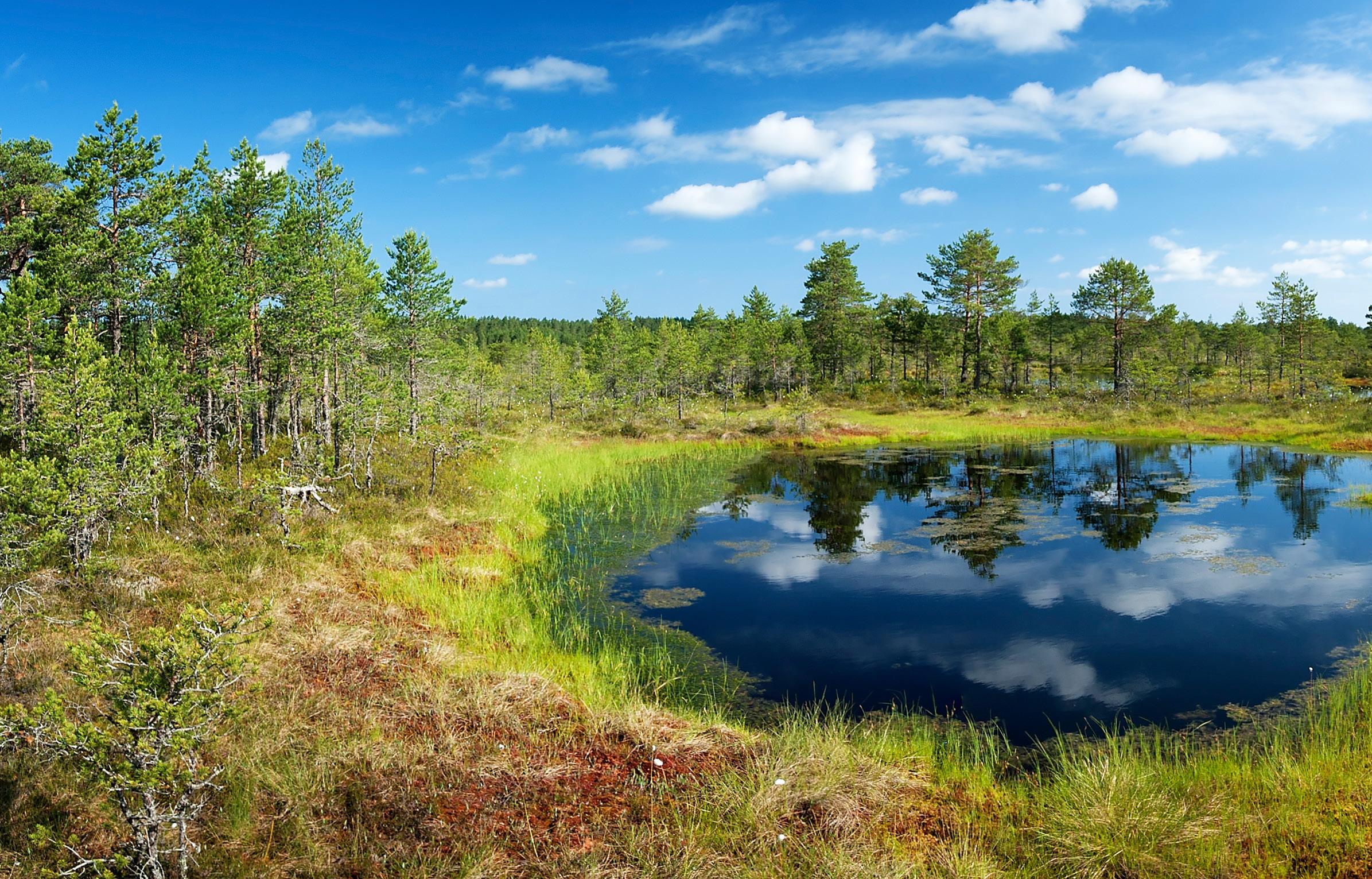
Viru Bog is a bog in Harju County, Estonia, within Lahemaa National Park.
A bird’s eye view of the Karula National Park full of countless lakes in Estonia.


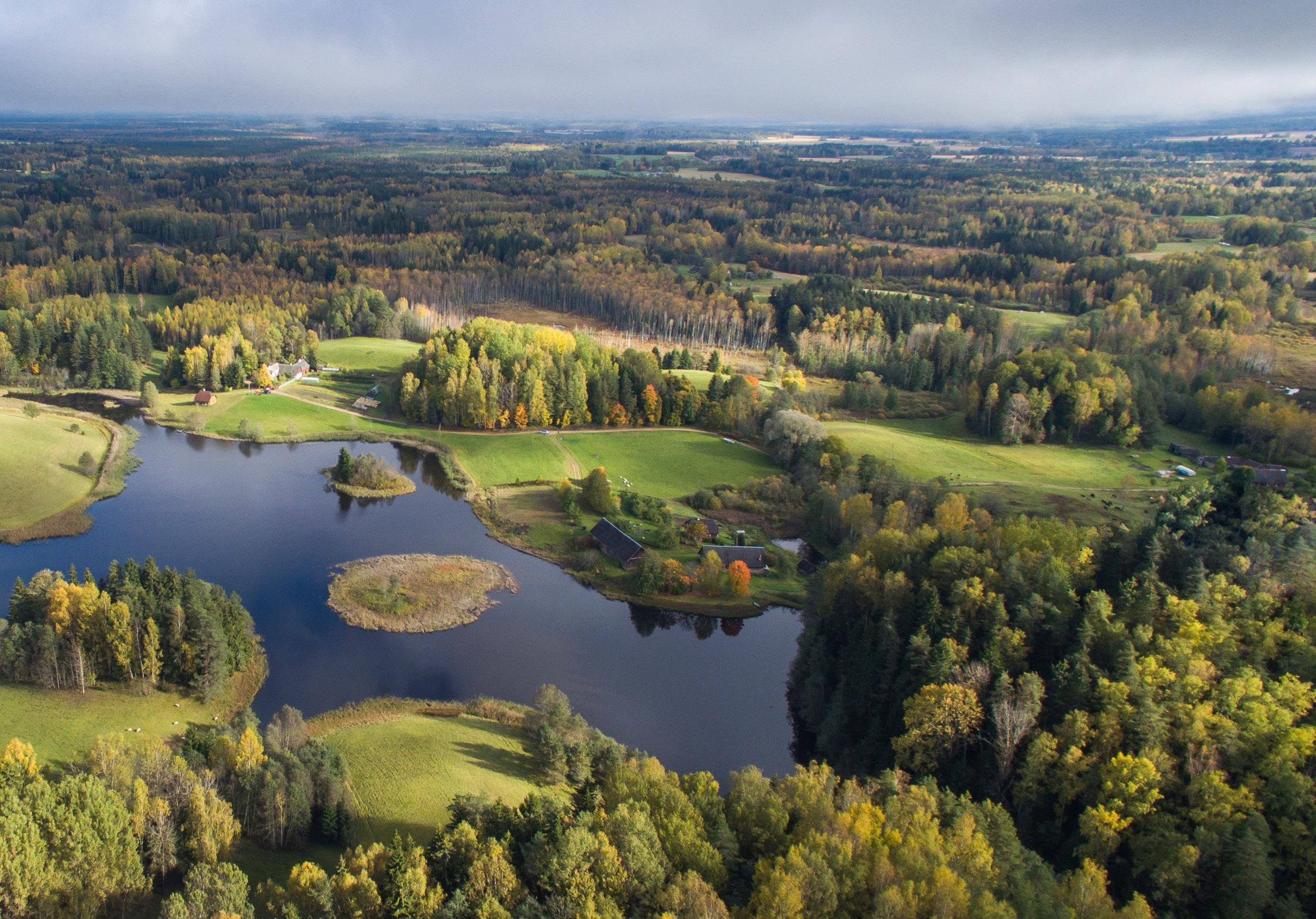
Cobbled street in Tallinn.

Alatskivi Castle is a Neo-Gothic castle in Alatskivi, Estonia.
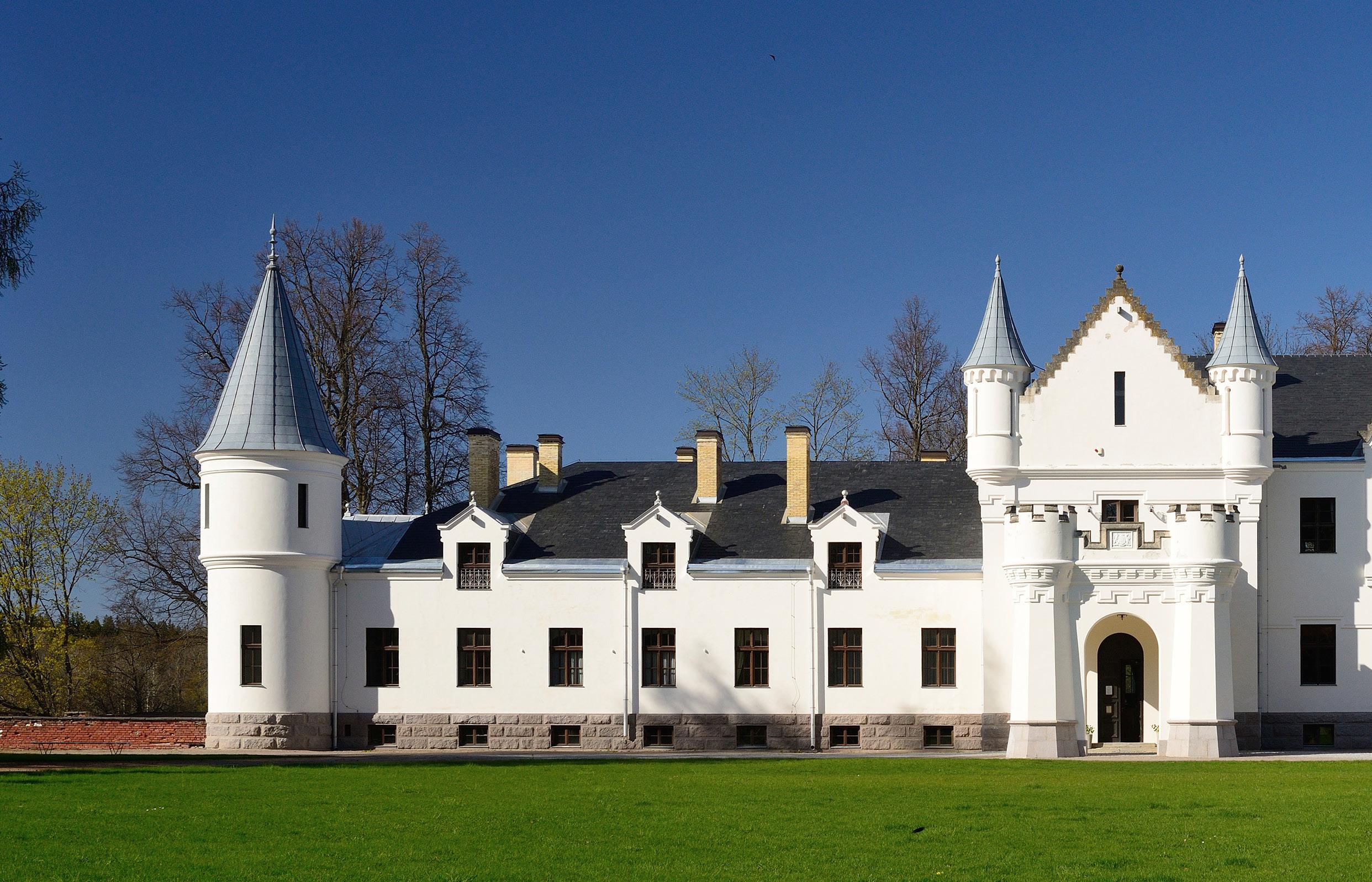
Tower Kiek in de Kök served as an artillery tower in Tallinn, Estonia, built in 1475.
